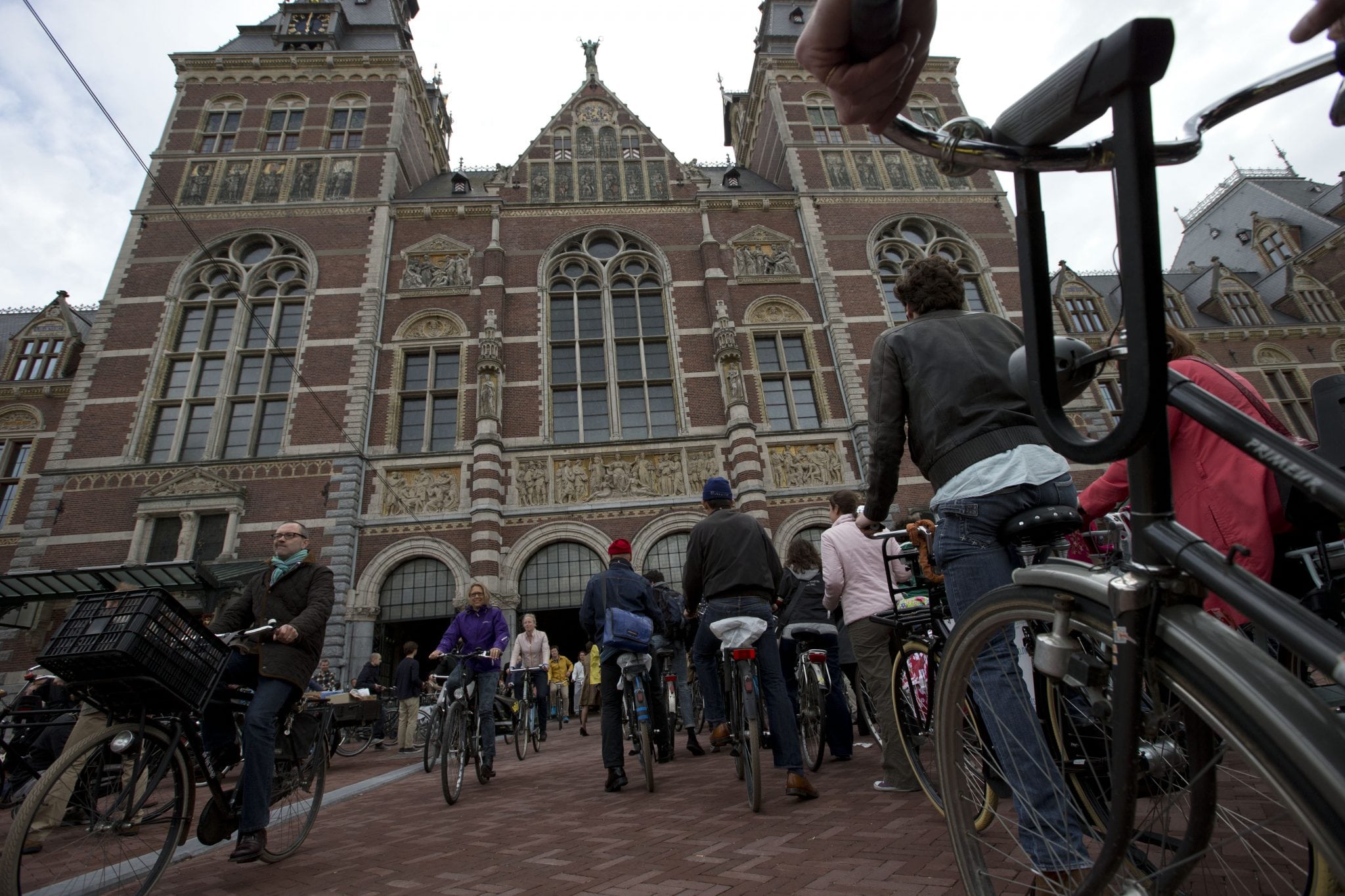Skift Take
Cycling is nearly as important as the Rijksmuseum to Amsterdam’s distinct culture, which would have made it a mistake for regulators to put a dam in the iconic area.
Guards removed the final barriers blocking the way, and a cheer went up from the crowd. Moments later, a small army mounted on bicycles of all shapes and sizes eagerly stormed the path that leads straight through the heart of the Netherlands’ newly renovated national museum.
Their bells were ringing all the way.
It has taken Amsterdam’s pro-bike lobby years of fighting to overcome architects, museum directors and a local government that sought to have the path closed forever. And there is still some doubt as to whether the path may not be closed at times to prevent unsuspecting tourists and pedestrians from being struck by bikes.
But in a city where there are more bikes than people, cyclists savored the path’s opening as a triumphant moment Monday.
“There was so much commotion over this, and some really heavyweight parties, such as the Rijksmuesum and the muck-a-mucks who said ‘you can’t do this, the bikes shouldn’t be let through,” said Bicylists’ Union spokeswoman Marjolein de Lange. “Above all else, we’re happy that we did it.”
The Rijksmuseum, which houses Dutch national treasures including paintings by Rembrandt van Rijn, Vincent van Gogh, Jan Steen and Johannes Vermeer, reopened last month after a 10-year renovation. But the dispute over the bike path lasted a little longer.
Traffic had been allowed through a tunnel-like passage under the somewhat eccentric brick building since it was constructed in 1885.
The Rijksmuseum itself resembles a fairytale castle, and the path runs through the middle, where a castle gate would be.
In 2001, Spanish architecture firm Cruz y Ortiz won a contest for a design to renovate the museum. Their original plan brought light into the center of the building by opening its central courtyards to natural light, and eliminated the path to make way for a new entrance.
That set off the first round of the dispute, with the museum’s previous director, Ronald de Leeuw, fighting what he termed the “provincial” standpoint of the bike lobby that opposed the plan.
But in 2005, the bike lobby won, and an altered design that allowed the path was approved. But in 2008, a new museum director, Wim Pijbes, renewed the fight against the bike path, proposing alternative locations.
In 2012, the government of the Amsterdam borough where the museum is located joined Pijbes. It said a traffic study had determined the bikes should be routed around the building, to protect pedestrians.
“The city has chosen for the future,” Pijbes proclaimed in April 2012.
But the bicyclists again fought back. Dueling petitions in favor of and against the bike path were launched, with the one circulated by the pro-bike path lobby gaining more signatures, by a 3 to 1 margin.
The city ruled again in favor of the bike path last June, and the 2005 plan is for the most part what became reality.
The floors of the courtyards were dug out, and the museum’s new entrance was placed below street level. The old path is now enclosed in glass, affording bikes and pedestrians a view of the museum as they cruise through.
In an interview with The Associated Press ahead of the museum’s reopening last month, Pijbes declined comment on the path. “It’s out of my hands,” he said.
Borough government spokesman Adam Cetindag said Monday that some safety issues remain unresolved and it is not clear if the path will be open on all busy days.
But Rinske Wieman, spokeswoman for the City’s Traffic Minister, said the path will definitely be open all day and night.
“This is a decision that was made by the city council, the highest democratic organization in the city,” she said. “Everybody had a chance to participate and debate, as we do so well in the Netherlands.
“In the end, it’s democracy that decides.”
Copyright (2013) Associated Press. All rights reserved. This material may not be published, broadcast, rewritten, or redistributed. ![]()
The Daily Newsletter
Our daily coverage of the global travel industry. Written by editors and analysts from across Skift’s brands.
Have a confidential tip for Skift? Get in touch
Photo credit: Hundreds of bicycles queue to pass through Rijksmuseum, in Amsterdam, Netherlands, Monday May 13, 2013, signaling the end of more than a decade of efforts by cyclists to ensure a passageway that runs under and through the Rijksmuseum would remain open to bike traffic. Peter Dejong / AP Photo
